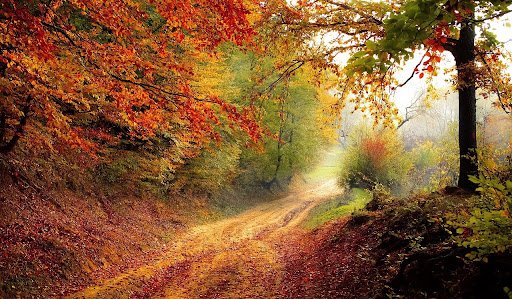Identification Trees With Large Heart-Shaped Leaves: A Journey Of Discovery

You can’t help but be amazed by the variety of wood when meandering through a verdant garden or beautiful woods. Not only do huge heart-shaped leaves stick out among these floral beauties. But their unusual foliage also adds a tranquil beauty to their surroundings. This newsletter will explore identifying trees with large heart-shaped leaves, including their traits, advantages, planting recommendations. And more.
Characteristics of Trees with Large Heart-fashioned Leaves
Big, heart-shaped leaves on trees are visually pleasing. These leaves. Which are often large and symmetrical and resemble the well-known symbol of love. This lovely leaf shape is exhibited by species such as the maple. Linden and magnolia have unique variations in size, texture. And shade.
Benefits of Trees with Large Heart-formed Leaves

Substantial heart-shaped leaves on bushes provide many benefits for human health. And the environment beyond their visual appeal. Their broad leaves give enough color, reducing the heat and energy used in urban areas. Additionally, they serve as birds’ and insects’ natural habitats, promoting the preservation of biodiversity.
Popular Varieties of Trees with Large Heart-shaped Leaves
Out of all the many kinds of trees. Several are distinguished by having enormous leaves that resemble hearts. Reputable for its vibrant fall hues. Maple wood features leaves that shift from green to vivid reds and oranges. Respected for their fragrant blooms. Linden trees have heart-shaped leaves with slightly serrated edges. Thanks to their silky. Glossy leaves. Magnolia trees—prized for their exquisite foliage—look even more beautiful.
Identification Tips
Distinguishing timber with large coronary heart-fashioned leaves requires attention to detail. Pay close attention to the size and shape of the leaves, noting any particular capabilities, such as lobes or serrations. Additionally. The bark texture and standard growth sample should be examined to confirm the species.
Ideal Growing Conditions
To thrive, bushes with huge heart-shaped leaves require appropriate growing conditions. They choose properly drained soil with a barely acidic to impartial ph. Additionally, adequate sunlight is crucial for their improvement. Although a few species tolerate partial color.
Planting and Care Tips

When planting timber, timing is fundamental. Optimal planting times vary depending on the species, but early spring or fall is usually right. Ensure proper spacing between bushes to prevent overcrowding and competition for resources. Regular watering and fertilization throughout the growing season promote wholesome growth and foliage.
Landscaping Ideas
They incorporate trees with massive heart-shaped leaves. Leaves in panorama design provide depth and texture to outdoor areas. Plant them as focal points in lawn beds or use them to create herbal barriers for privacy. Complement their foliage with flowering shrubs and groundcovers for a harmonious aesthetic.
Common Pests and Diseases
Like all plants, timber with big, heart-shaped leaves is at risk of pests and diseases. Look for typical troubles. Such as aphids, scale insects. And fungal infections. Implement incorporated pest control techniques and proper sanitation practices to limit harm and keep trees fit.
Seasonal Maintenance
Routine protection ensures the power and longevity of those bushes. Pruning lifeless or diseased branches promotes air movement and prevents the spread of illnesses. In less warm climates, provide winter protection by mulching the bottom of the tree and wrapping frost-prone branches.
Notable Landmarks with Trees of this Variety
Botanical gardens and public parks are often characterized by a multitude of trees. Inclusive of those with large coronary heart-fashioned leaves. Explore those tranquil settings to recognize the splendor and grandeur of those majestic specimens in their herbal habitat.
Historical Significance

Throughout history, bushes with big. Heart-shaped leaves have held cultural importance in diverse societies. From historical mythology to trendy symbolism, these bushes were revered for their splendor and resilience and metaphorical institutions with love and increase.
FAQs
What is the significance of heart-shaped leaves?
Heart-shaped leaves symbolize love, affection, and vitality, adding a romantic touch to any landscape.
How do I identify trees with large heart-shaped leaves?
Look for broad. Symmetrical leaves with a distinctive heart shape. Focusing on leaf size, texture, and bark appearance.
Can these trees grow in all climates?
While some species thrive in temperate climates, others are adaptable to a wide range of environmental conditions.
How often should I water my tree?
Water trees with large heart-shaped leaves regularly. Especially during drought or high temperatures, ensuring the soil remains moist but not soggy.
Are there any specific diseases I should watch out for?
Keep an eye out for common pests like aphids and scale insects. As well as fungal diseases such as powdery mildew and leaf spot. Implement preventive measures to protect tree health.
Conclusion
Large leaves shaped like hearts adorn exquisite trees. In garden. They add color and provide shade. Trees with leaves resembling hearts are common. Fall foliage on several species is crimson. In different areas grow trees with leaves shaped like hearts. The world is better off with them, which is why people like them. Big heart-shaped leaves are simple to find on trees.
Take note of the bark and leaves. There are trees with large. Verdant leaves. Little red leaves grow on others. This tree planting is enjoyable for growth. They need water and sunshine. They’ll be delighted if you take care of them.





